Reviews
Irving Rapper
USA, 1942
Credits
Review by Matt Bailey
Posted on 04 May 2012
Source Warner Bros. DVD
Categories Favorites: Transformations
One of my favorite star entrances in movie history is the introduction of Bette Davis as Charlotte Vale in Now, Voyager. It occurs a few minutes into the film, just as her character’s mother is telling the psychiatrist, Dr. Jaquith - who has come to ward off Charlotte’s impending nervous breakdown - how Charlotte was a surprise birth and how she considers her an “ugly duckling.” All we see of Charlotte is a pair of thickly-stockinged legs ending in matronly shoes descending the staircase. She hesitates at the bottom of the stairs, eavesdropping on the conversation about her. The film soon cuts to a wide shot of the room in which her mother, sister-in-law (and only friend), and the psychiatrist continue discussing her. Instead of being revealed in a medium shot as she enters the room (as classical Hollywood style might dictate), Charlotte fairly creeps into the shot in the background. As her sister-in-law stands and walks toward her, the film then cuts to the medium shot and we in the audience get our first real glimpse of our star. Practically cowering from her relative’s embrace, we see that Charlotte is not the brash, coldly beautiful character Davis typically portrays but a shy, lumpy creature with bushy eyebrows, wiry hair parted down the middle and pulled back in a bun, dark circles under her eyes, and just the slightest hint of a visible mustache. In addition to her stockings and “sensible shoes,†she wears a dowdy, formless dress with a high neck and a low hemline and - those universal cinematic signifiers of feminine unattractiveness - glasses. Our multi-Oscar-winning star is introduced visually in the meekest possible way: she is not “Bette Davis†but just, as she is later described in the movie, “the fat lady with the thick brows and all the hair.â€
My fondness for this introduction comes from its complete inversion of the typically splashy female star entrance. Compare it with Rita Hayworth’s magnificent entrance in Gilda, in which she pops into the bottom of the frame, bare-shouldered and tossing her hair, mockingly replying, “Me?†to the question, “Are you decent?†Or with Barbara Stanwyck’s entrance in Double Indemnity, first seen at the top of the stairs in nothing but a towel, then sashaying down the staircase as the camera focuses on her ankle bracelet and gaudy shoes, a shot that tells you everything you need to know about her cheap, vulgar character. Each of these are point-of-view shots, framed by the desiring glances of the male lead. Charlotte, our ugly duckling, is not the beneficiary of a desiring glance. She is hardly noticed gliding into the back of the frame, a phantom in her own home. It’s another few shots before we get a close-up of her, and more than seven minutes into the movie before she utters her first line.
What makes this entrance even more interesting is that is only the first of several dramatic visual reveals or her character in the film. When Charlotte reminisces with Dr. Jaquith about how she came to be a self-described spinster, the film flashes back to the twenty-year-old Charlotte not ugly, but merely a gawky girl in Swiss miss braids and a mirthless cotton frock being taken advantage of by a handsome sailor on a cruise up the African coast. Though Charlotte is flattered by the attention, her mother (the terrifying Gladys Cooper) quashes the budding affair with undue harshness and sets forth to ensure that no man ever pays Charlotte the slightest attention again, locking her up physically as much as emotionally. Charlotte becomes convinced of her own worthlessness, spending years in her room smoking contraband cigarettes, wearing forbidden lipstick, and carving ivory boxes until summoned to attend to her mother’s latest cruel whim.
Over her mother’s objections, she is eventually spirited away by Dr. Jaquith to spend a few weeks at his sanitarium, Cascade, where therapy seems to consist entirely of casual conversations and loom-weaving. The film is a product of the Hollywood’s 1940s flirtation with psychiatry (see also Spellbound, Nightmare Alley, The Snake Pit, et al), but we see very little of it practiced. Yet whatever occurs at Cascade seems to have a restorative effect on Charlotte: she loses weight, no longer requires glasses, and could almost, very tentatively, be described as happy. But the end of her stay at the sanitarium means a return to living at home with her mother. Dr. Jaquith’s solution to Charlotte’s hesitance to return home is to send her on a long cruise around South America. The doctor’s interventions are meant to calm her nerves, but they set in motion two transformations: a psychological one which is the movie’s primary trajectory and is only complete with the last lines of dialogue, and a no-less-miraculous physical change that is instantaneous—pure movie magic.
When the film cuts from Charlotte’s room at Cascade to the desk of an ocean liner, people are talking about her again, and she is again off-screen. But she is no longer Charlotte Vale; she is, by an accident of registration, Renee Beauchamp. Passengers disembarking for a day trip gossip about Miss Beauchamp and how she rarely comes out of her room. And now she is holding them up until, ah, there she is. The film cuts to a close-up of a pair of shapely legs shod in smart spectator pumps, echoing the first reveal of Charlotte on the stairs. But now the camera tilts up for a textbook star entrance, framing Bette/Charlotte/Renee in the admiring gaze of the passengers. No longer a frump, Charlotte now wears a dapper Orry-Kelly suit with a nipped waist and short sleeves, long white gloves, and her hair is swept up underneath a wide-brimmed hat with a veil. And she no longer needs to hide her love of lipstick. Charlotte is glamorous, but yet still tentative. The neckline of her suit (which we soon discover is borrowed) is still high, the gloves cover her arms up the elbows, and the hat allows her to hide in plain sight. But while sitting tucked away in a corner of the ferry to shore, she is introduced to Jerry Durrance, another lone traveler with whom she is asked to share her car during the excursion. Charlotte hesitates but acquiesces after remembering Dr. Jaquith’s instructions to try to be interested in others.
It should come as no surprise, given the swelling Max Steiner strings under his introduction and the fact that Jerry is played by Paul Henreid, that a romance ensues. The affair is troubled by the revelation that Jerry is married with children, including one, bespectacled Tina, who reminds Charlotte of herself as a young girl when Jerry shows her a picture of his family. But Charlotte, flattered by the attention of an attractive man even if it can lead nowhere, welcomes his flirtations even as she still makes cutting jokes about being a spinster aunt. Jerry further flatters her by buying her a bottle of Jolie Fleur - pretty flower†perfume - and inviting her to dinner. The invitation precipitates the completion of Charlotte’s physical transformation as she pulls her evening clothes from her prescribed wardrobe. The next shot is yet another surprising reveal, another star entrance: once again, Charlotte’s feet appear first, but this time they are hidden beneath a diaphanous floor-length gown with a very deep neckline. Atop this she wears a shimmering embroidered cape and has her hair piled on her head in a wavy pompadour. She is physically and psychologically exposed—beautiful but vulnerable. In the span of ten minutes of screen time, Charlotte has transformed from old maid into the center of attention, yet the change is only skin-deep. She still considers herself a spinster aunt unworthy of Jerry’s attention, and she flees back to her room before dinner is served.
The next fifty minutes of the film are devoted to a fairly standard forbidden-romance plot and to Charlotte’s struggle to maintain her independence (and her sanity) once she returns home, slowly discovering that living well is the best revenge she could have on her mother. After she asserts herself to her mother with particular forcefulness, the old woman’s weak and aged heart gives way and Charlotte blames herself for her mother’s death. At the edge of another nervous breakdown, she returns to Cascade only to find herself meeting Tina, Jerry’s sad and hopeless daughter. Charlotte immediately forgets her own needs and troubles and sets out to help Tina overcome hers. It is here where Charlotte’s more difficult psychological transformation begins to be realized. By feeling wanted and needed by Tina as a mother might, she begins to repair the hole in her psyche left by the absence of her own mother’s love. And to love the unattainable Jerry by proxy through loving his daughter as she would her own helps Charlotte heal in a way that loving and being loved directly by Jerry could not. She is removed from the directness of his attentions and thus does not wither under their intensity and from her perceived lack of worth. Charlotte plies Tina with ice cream and tennis, long walks, conversation (the Jaquith method), and even has Tina live with her until both have become almost miraculously whole (rendered credible by the strong performances of not only Davis but also Janis Wilson, the latter in her first screen role). By the end of the film, Tina is a sociable, normal young girl prattling on about normal young girl things, and Charlotte is a confident, independent woman.
This transformation is only complete, however, when she tells Jerry of how their shared love for Tina - and Tina’s love for the both of them - is the only way they can continue to love each other. Out of guilt for leading her on and for Tina occupying so much of her attention, Jerry wants Charlotte to give up Tina and “find some man†who will make her happy. At long last a fully-realized “Bette Davis character,†Charlotte reacts with anger, pacing the room and bugging her eyes in that extraordinary, inimitable Bette Davis manner, finally demanding to get her own way. When Jerry capitulates to her compromise, understanding that they will continue to live their separate lives, joined only through their love for Tina, he asks her if that will make her happy. She replies with that legendary and heartbreaking line, “Oh, Jerry, don’t let’s ask for the moon. We have the stars.â€
After you wipe away the tears that final scene inevitably provokes, you might come to see that, in some respects, Now, Voyager is a silly movie. Its naive portrayal of psychiatry and motherly love as almost instantaneous cures for decades of emotional abuse keeps it from being taken completely seriously, and its tone that fluctuates rapidly from deep despair to comical interludes involving incompetent Brazilian taxi drivers can be frustrating. But the rare emotional complexity of Charlotte Vale, her multilayered transformations, and her eventual realization that she doesn’t need a man to become a fully actualized woman are all exceedingly rare in a film from the classic Hollywood era. It’s the kind of rich portrait of a woman that made Bette Davis the powerful screen presence and reliable box office she was at the height of her career and the kind of film in which she best demonstrated her skill and intelligence as an actress. Any pretty actress can be made ugly with the application of the right makeup, but it takes one of Davis’ talents to transform from ugly to beautiful, awkward to confident, meek to assertive, and remain believable throughout.
More Favorites: Transformations
-
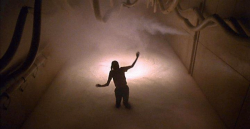
Altered States
1980 -
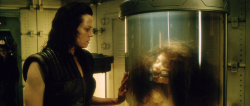
Alien: Resurrection
1997 -
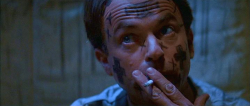
In the Mouth of Madness
1994 -
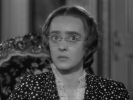
Now, Voyager
1942 -
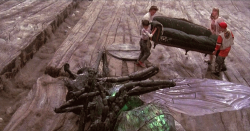
Honey, I Shrunk the Kids
1989 -
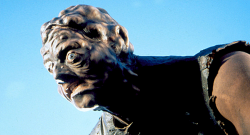
The Toxic Avenger
1984 -
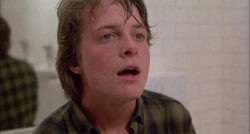
Teen Wolf
1985 -

Teen Wolf Too
1987 -
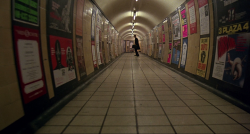
An American Werewolf in London
1981 -
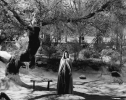
The Curse of the Cat People
1944 -
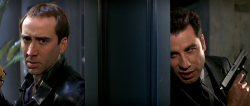
Face/Off
1997 -
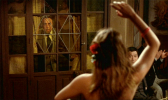
That Obscure Object of Desire
1977 -
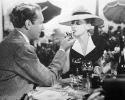
Now, Voyager
1942 -
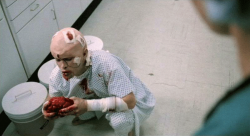
From Beyond
1986 -
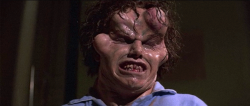
The Beast Within
1982 -
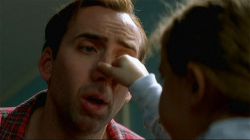
The Family Man
2000 -
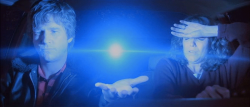
Starman
1984
We don’t do comments anymore, but you may contact us here or find us on Twitter or Facebook.



